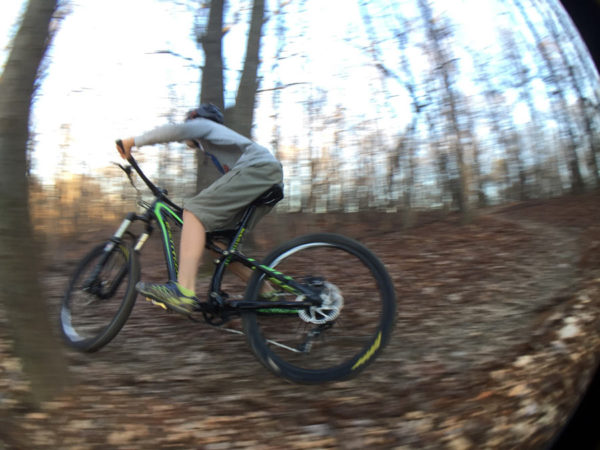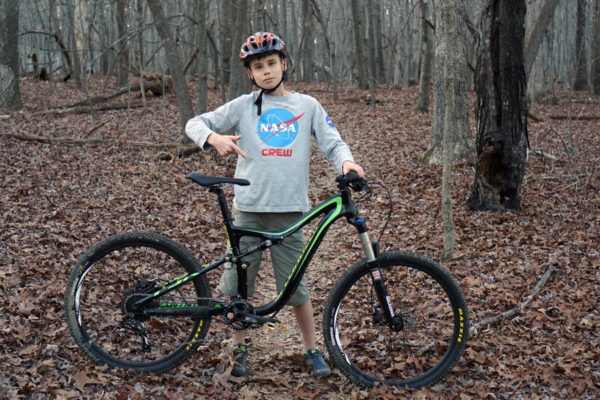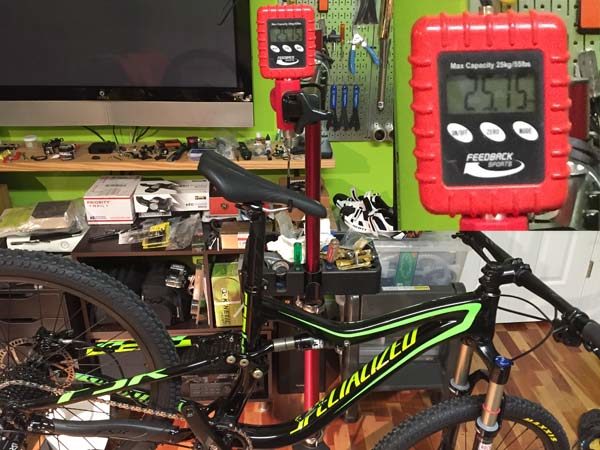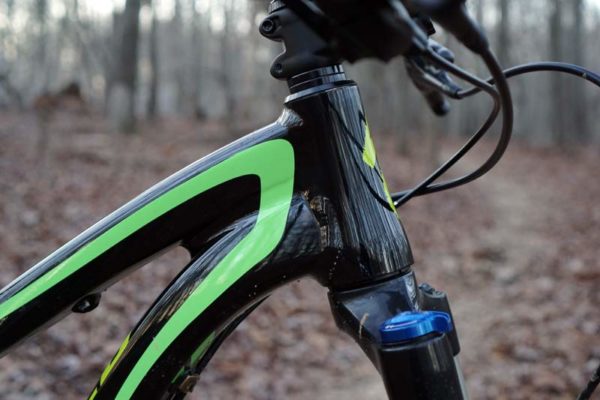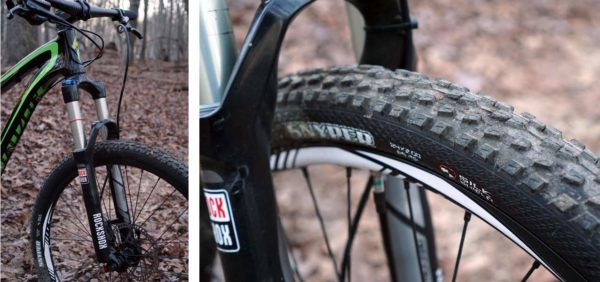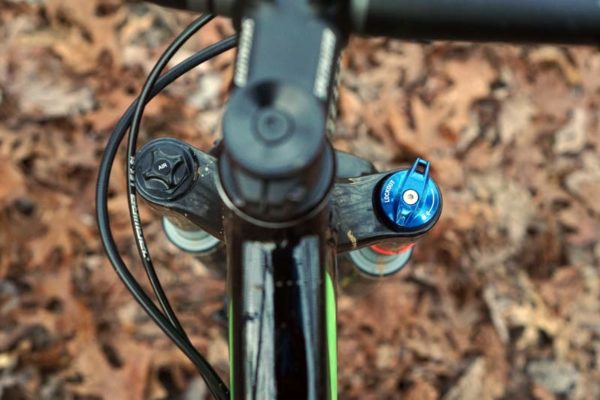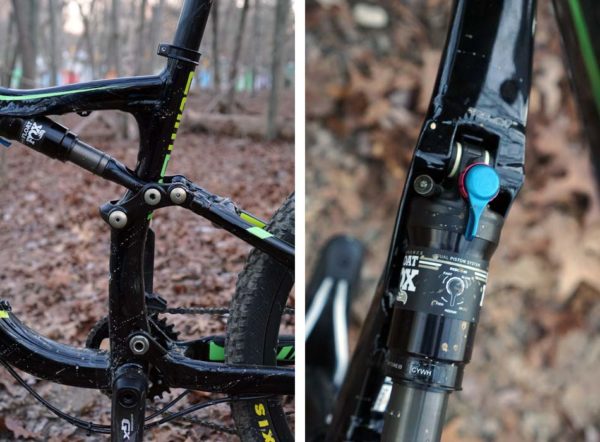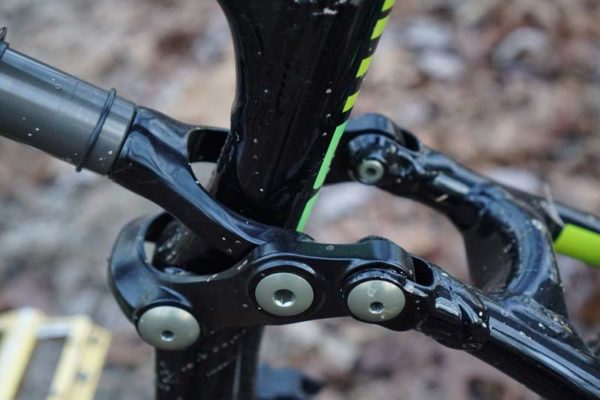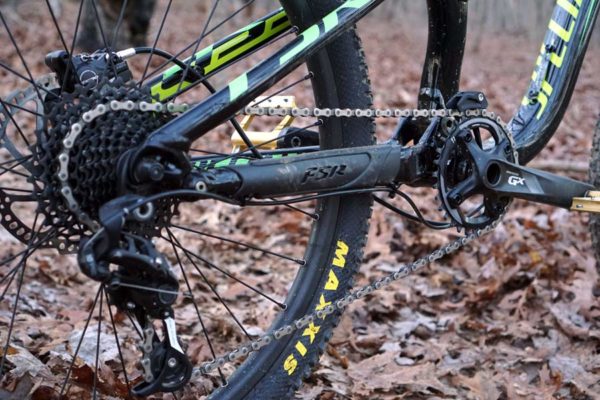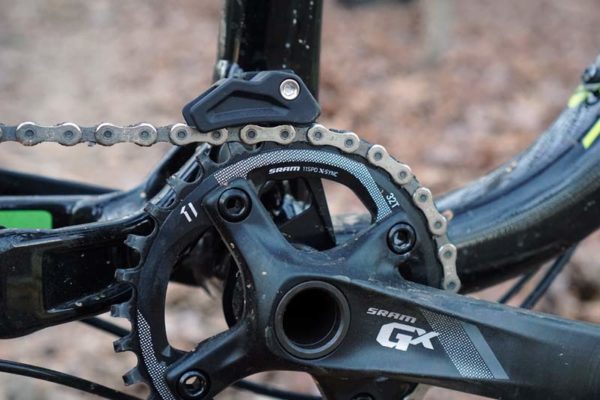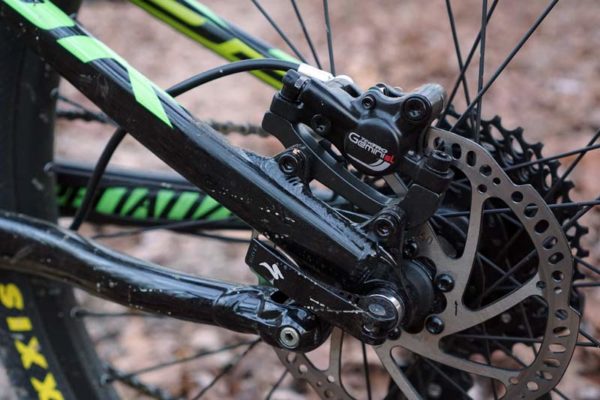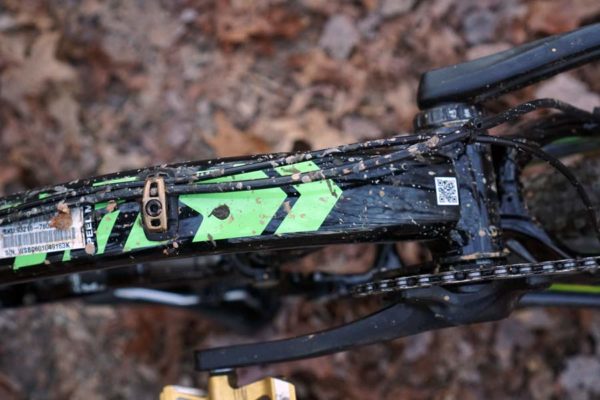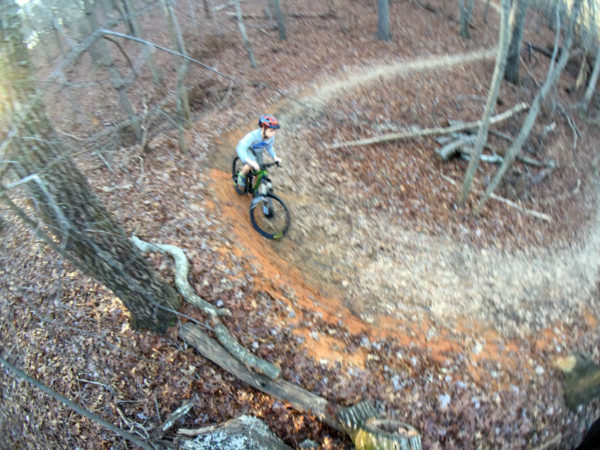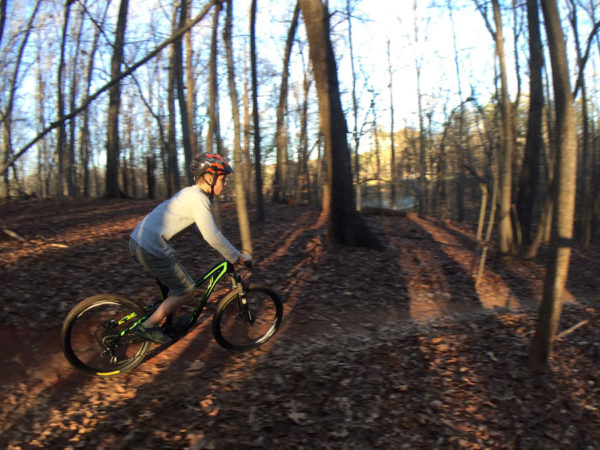There’s something to be said for getting a kid started on a fully rigid hardtail. But if your local trails are super gnarly, there’s also a pretty darn good argument for getting them suspended as quickly as possible. Traction aside, it’s more about comfort and safety, assuming the weight penalty isn’t too grand. If you a) have a little tyke at home that’s itchin’ to keep up with you, and b) are already thinking this might keep them from bouncing around uncontrollably, then the Specialized Camber Grom might be worth a look.
First up, Specialized didn’t continue this model into their 2017 lineup. But they’ve still got inventory, which you can find if you search past models on their website. If you’re fine with that, read on why their FSR suspension is ready made for smaller riders…
We tested the Camber Grom under my son, who weighed in between 75lb and 80lb during the test, and measured 4’9″ to 5’1/2″ during the test (yes, they really do grow that fast). Prior to this, we had already moved him off a 24″ Raleigh youth hardtail to my wife’s old Kona 26″ hardtail, both with front suspension. He was markedly faster upon moving to the 26″ bike, but a little stretched out. So, fit was slightly better going back to the Grom, but I could tell he wasn’t rolling over things quite as quickly with the 24″ wheels.
Which brings up the first highlight of this bike: It can grow with them for some time because it also fits 26″ wheels…albeit, probably with nothing more than a 26×2.0 tire from the looks of it. But, as you scroll through the pics, that explains the longer chainstays and standard 26″ Rockshox fork. If you’re starting them out small on this one, you’ll probably have to cut the seatpost down. This is as low as it gets and was borderline too tall when he started riding it, and too tall for my daughter to ride it even though she’s already on a 24″ Trailcraft hardtail.
Weight for the complete bike is 25.15lb (10.95kg), which is at least as good as most budget hardtails. And it should be for the $2,200 asking price. That gets you an M5 alloy frame with 26″ wheel geometry; Rockshox Recon Gold fork and Fox Float Performance DPS shock; SRAM X5/X7 shifting, 155mm GX cranks and PG-1020 cassette, Tektro Gemini hydraulic disc brakes, Alex rims and Maxxis tires. Cockpit is all Specialized, including a Body Geometry saddle.
The bars are 750mm wide, but can be cut down for smaller riders.
Tires are Maxxis Snyper 24×2.0, and you can see that adding 26″ wheels would likely mean you need to keep the tire size to about 2.0 in order to maintain proper clearance. Depending on how long Specialized lets us keep the bike, we might try to find some 26″ QR wheels tires and see how it goes (I was going to include that in this review, but I just don’t have any wheels or tires like that laying around anymore).
The fork is set at 110mm travel to match the rear end.
Compared to the adult Camber, the Grom uses a different linkage that mounts the shock yoke between the two linkage pivots (as opposed to sharing the upper pivot).
That, and it also uses totally different geometry, designed specifically for smaller riders and wheels. Read that to mean you can’t simply buy the smallest frame size in a regular Camber and put the smaller wheels on it to achieve the same effect (we asked).
An 11-36 cassette and 32-tooth X-Sync chainring provide a good range for kids, but you could always add aftermarket oversized cogs to expand the range or fit a 30-tooth 104bcd chainring.
The included chain guide is a nice touch, and the 155mm crank arms definitely seemed to fit my son a little better than the 175mm ones on the 26″ Kona he was riding.
Other than being QR front and rear, the Grom looks every bit as pro as Specialized’s adult bikes.
At first, I definitely noticed he was slower having transitioned from 26″ wheels. But, presumably, most people looking at this bike for their kids aren’t going to be regressing in wheel size, so ignore if irrelevant. But, after a few rides, I noticed he was ripping through rougher, rootier sections faster. I attribute that to the rear suspension taking the hits that normally would be bouncing him around. And that highlights why the FSR design is particularly good for kids: It’s very active.
Specialized puts a lot of effort into designing motion control into their shocks (BRAIN, platform damping, etc.) on adult bikes because (in my experience) their FSR design is otherwise overly active. For larger riders like me, that control is mandatory for any semblance of efficiency. But it took a conversation with an ex-pro World Cup DH racer (who’s very thin and light and not affiliated with Specialized in any way) to illuminate why this hyper active suspension is such a good thing for smaller riders. I’ll paraphrase it as going something like this:
ME: It’s really active, I can see it moving when he pedals. It seems like it’s just too active.
PRO: Yeah, but do you know how hard it is to get a suspension to work well under really light riders? I struggled with that for years. So that’s really impressive.
And with that new perspective, I paid more attention to the rear suspension on our next ride. Indeed, it’s active, but it worked over roots and rocks and compressed into G-outs and returned in a controlled manner. In other words, it did exactly what a good suspension should do: It helped him maintain control.
Our biggest technical ride was Rocky Knob Bike Park in Boone, NC, which is not lift served. We earned our turns by pedaling up before hitting the rock strewn descents and bermed turns, and the bike worked well in both directions. The 110mm travel seems like a good number for the XC to Trail we typically ride. It’s a shame this model’s discontinued, but at least you can still nab one and give your kid a solid five years or more of shredding.
